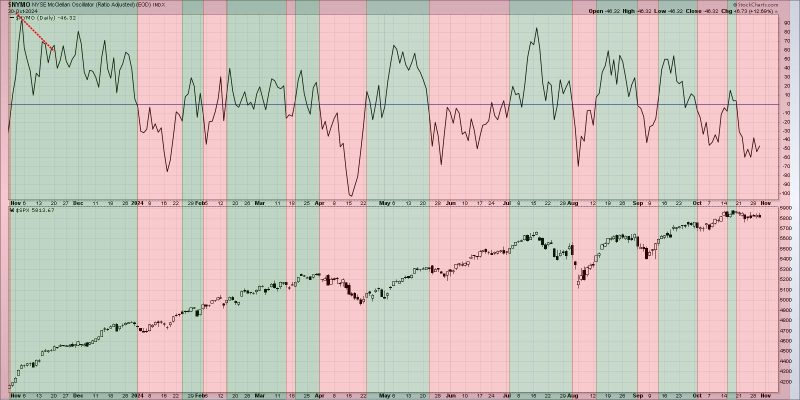Breadth Divergences: Understanding Their Significance in Market Analysis
Market analysis is a crucial aspect of investment decision-making, aimed at predicting the future direction of financial markets. One method that analysts often employ is monitoring market breadth divergences, which can provide valuable insights into the overall health of the market. In this article, we will delve into the concept of breadth divergences and their potential implications for investors.
Understanding Breadth Divergences
Breadth divergences refer to discrepancies between the performance of a broad market index, such as the S&P 500, and the performance of individual stocks within that index. In essence, breadth divergences occur when the index is driven higher by a small number of large-cap stocks, while the majority of stocks within the index exhibit weak performance. This can lead to a situation where the market appears strong on the surface, but is actually vulnerable due to underlying weakness in the breadth of the market.
Implications for Investors
Breadth divergences can serve as a warning sign for investors, signaling potential market weakness ahead. When a market rally is driven by only a handful of stocks, it may lack sustainability and be more susceptible to a sharp correction. In such cases, investors should exercise caution and consider adjusting their investment strategies to account for the underlying weakness in market breadth.
Furthermore, breadth divergences can also provide opportunities for savvy investors. By identifying sectors or individual stocks that are showing strength despite overall market weakness, investors can position themselves to outperform the broader market. This requires a careful analysis of market internals and a deep understanding of sector rotation dynamics.
Market Analysis in Practice
In practice, monitoring breadth divergences involves tracking a variety of market indicators, such as the advance-decline line, new highs and new lows, and sector performance. By examining these indicators alongside the performance of the broader market index, analysts can gain a clearer picture of market breadth and identify potential divergences that may indicate a shift in market sentiment.
It is important to note that breadth divergences are just one piece of the puzzle when it comes to market analysis. Investors should also consider other factors, such as macroeconomic trends, corporate earnings, and geopolitical events, when making investment decisions.
In conclusion, breadth divergences play a significant role in market analysis and can offer valuable insights for investors. By understanding the implications of breadth divergences and incorporating them into their investment strategies, investors can better navigate the complexities of the financial markets and improve their chances of achieving long-term investment success.

